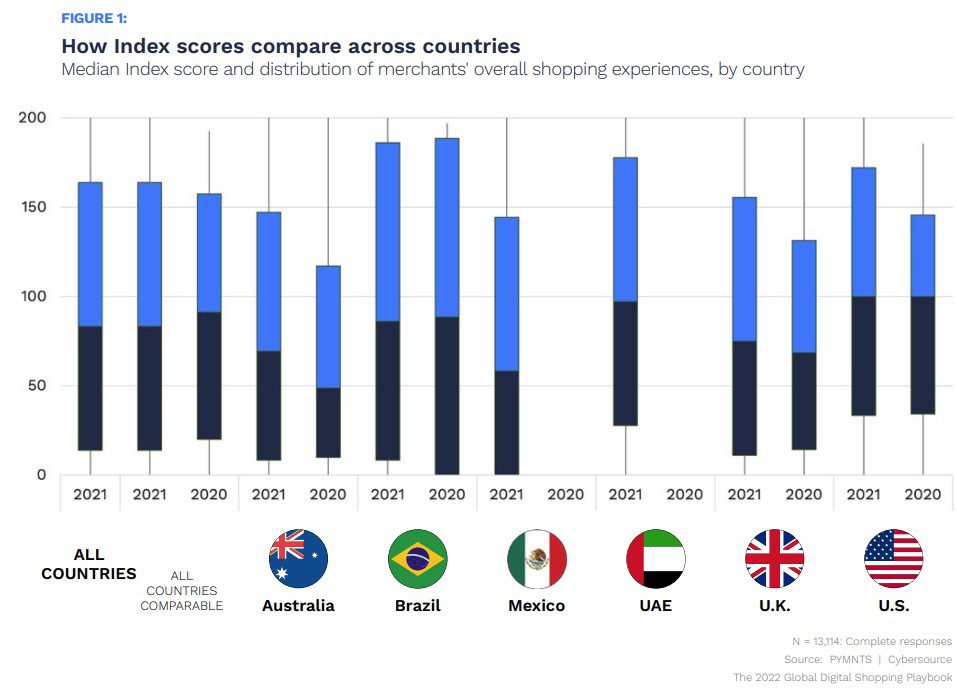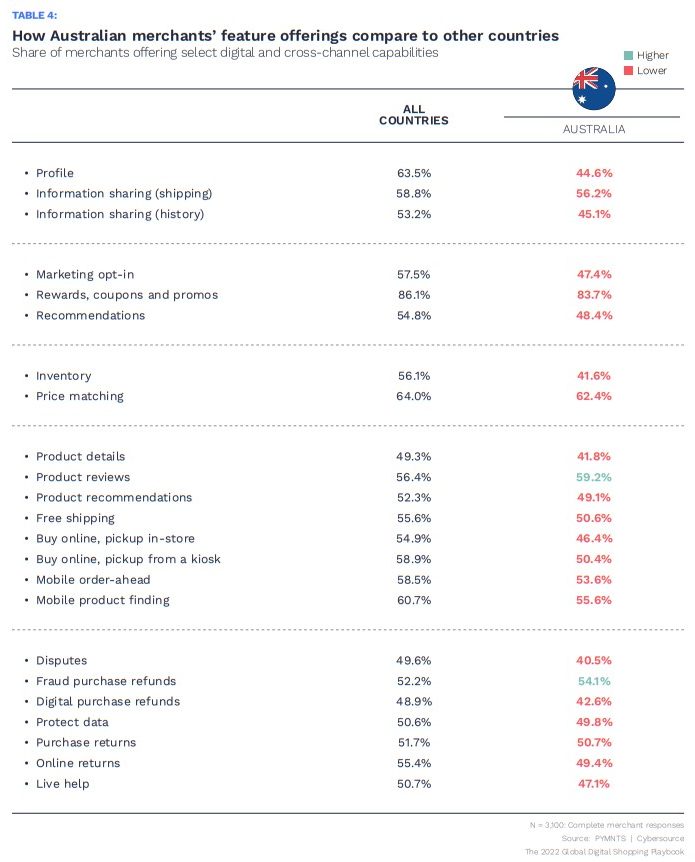2022 Global Digital Shopping Index Shows Australian Merchants Forced to Play Digital Catchup

Australian merchants are behind those in five other countries when it comes to digital feature innovation, according to “The 2022 Global Digital Shopping Playbook,” a PYMNTS and Cybersource collaboration that examines the behaviors of 13,114 consumers and 3,100 merchants across Australia, Brazil, Mexico, the UAE, the U.K. and the U.S.
Get the report: The 2022 Global Digital Shopping Playbook
By combining this wealth of data, PYMNTS calculated a unique Global Digital Shopping Index score for each country, quantifying the shopping friction that consumers experience when shopping and paying for retail products. Higher Index scores represent more frictionless shopping experiences.
Australia’s Index score for 2021 is 81.1, which is about 9% higher than it was in 2020 but still lower than the scores of the other countries in the study.
Australian merchants score so low because they offer fewer digital shopping features. In 21 of the 23 digital and cross-channel capabilities covered in the report, the share of Australian merchants offering the feature is lower than average share in all countries.
For example, in 2021, just 45% of all Australian merchants provided their customers with digital profiles that could be accessed across shopping channels, whereas the sample average was 64%.
Similarly, 42% of Australian merchants allowed customers to check their inventories in real time, yet 56% of merchants across all six countries provided real-time inventory updates.
There are only two features that Australian merchants are more likely to offer than the average of those in all countries: product reviews and fraud purchase refunds.
More local shoppers are avoiding merchants that do not offer the integrated shopping experiences they want, and if these merchants do not act fast to stop this mass migration, they risk being overtaken by their more digitally innovative competitors.


